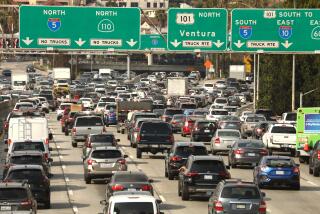Put It On and Stay Alive
- Share via
Government often is accused of taking the fun out of life through its daily intrusions. So it is natural that mandatory safety measures, be they laws requiring seat belts or motorcycle crash helmets, would be the target of harsh public criticism. Yet in study after study these so-called intrusions are shown to reduce deaths and injuries, sometimes significantly, and often at great savings for taxpayers.
In 1991, California passed legislation requiring motorcyclists and their passengers to wear crash helmets. Opponents were extremely vocal and went so far as to vow to protest by defying the headgear law. Now into the picture rides a UCLA study showing that the measure helped reduce motorcycle fatalities by 37.5% in its first year, sparing as many as 122 lives. The helmet law also was found to have reduced passenger deaths and nonfatal injuries, along with the time that injured cyclists spent in intensive-care units. All of this saves massive amounts of public money. A UC Davis study several years ago found that medical bills for an injured motorcyclist averaged more than $17,700 (surely that figure has risen since). About 82% of the cost is picked up by the unsuspecting taxpayer in the form of publicly funded state emergency services--another reason nearly half of all the states, and the District of Columbia, have helmet laws on the books.
Plainly the evidence supports those who argued that headgear legislation would pay off substantially over the years by keeping thousands of people in one piece. A motorcycle helmet may be an inconvenience, but it may also allow its user to live to ride another day.
More to Read
Sign up for Essential California
The most important California stories and recommendations in your inbox every morning.
You may occasionally receive promotional content from the Los Angeles Times.













